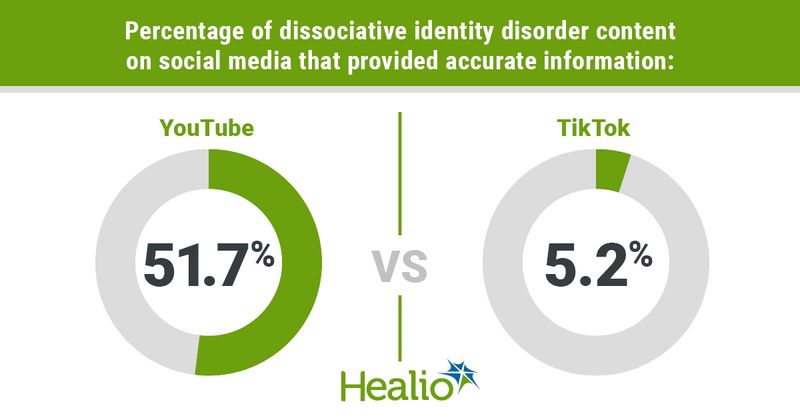TikTok, YouTube may help educate on dissociative identity disorder
Key takeaways:
- There were differences between the content on TikTok and YouTube about dissociative identity disorders.
- Health care professionals should recognize social media as a source of information on these disorders.
SAN FRANCISCO — Compared with TikTok content, a greater proportion of content on YouTube was considered useful and educational, according to a presentation at the American Psychiatric Association annual meeting.
“Social media has grown in prevalence in recent years, becoming an integral part of our daily lives, and it’s estimated that around 4.2 billion people are actively using social media,” Isreal Bladimir Munoz, a fourth-year medical student at the University of Texas Medical Branch in Galveston, said in his presentation. “The allure of social media lies in its ability to facilitate instant communication; it provides a sense of belonging within a community and it offers opportunity for self-expression as well. However, there are concerns about how it has impacted mental health, privacy and the spread of misinformation.”

Munoz and colleagues searched YouTube and TikTok using the search terms “dissociative identity disorder,” “multiple personality disorder” and “split personality disorder” and selected the top 60 videos for each term on each platform for analyses. The researchers evaluated videos using a modified DISCERN (mDISCERN) Scale and the Global Quality Scale (GQS), and they categorized videos as useful — as in providing correct information about dissociate identity disorder (DID) — misleading or neither.
In total, 60 YouTube videos and 97 TikTok videos met inclusion criteria.
On YouTube, 51.7% of videos were useful, 6.6% were misleading and 41.7% were not useful or misleading. Most videos involved educational content, interviews and personal stories.
There were significant differences in the quality of content based on the source of videos on YouTube, with educational organizations and health care professionals scoring highest on the mDISCERN and GQS and independent users and film/TV sources scoring lowest. For video type, educational videos scored highest and comedy skits and compilation videos scored lowest.
In comparison, TikTok videos were classified as 5.2% useful, 10.3% misleading and 84.5% neither useful nor misleading. Quality scores were similar to those of YouTube, with educational organizations scoring highest and podcasts and film/TV sources scoring lowest. For video type, educational videos and interviews scored highest and comedy skits and art scored lowest.
Health care professionals should create content about DID on YouTube and TikTok and understand how social media algorithms work to better promote educational content, according to Munoz.
“By aligning their content with social media algorithms, health care professionals can contribute to the dissemination of trustworthy health information on the internet in this new digital realm,” Munoz said.

